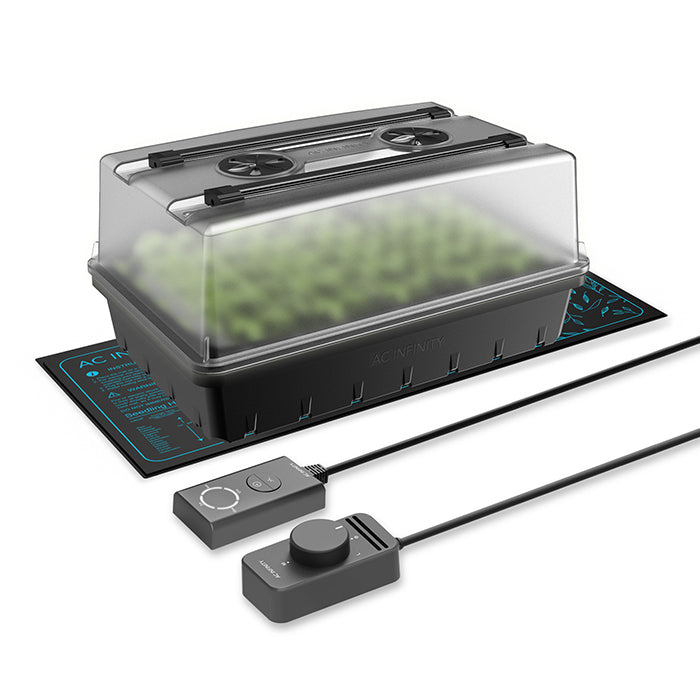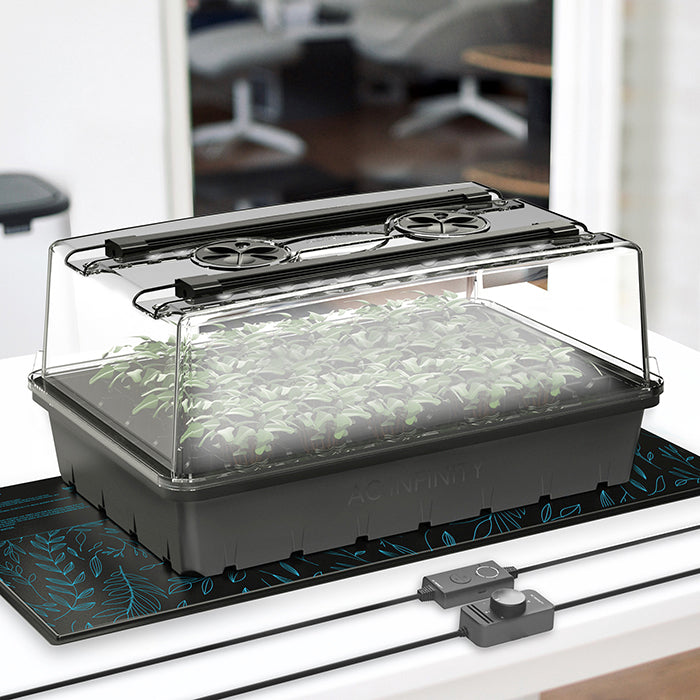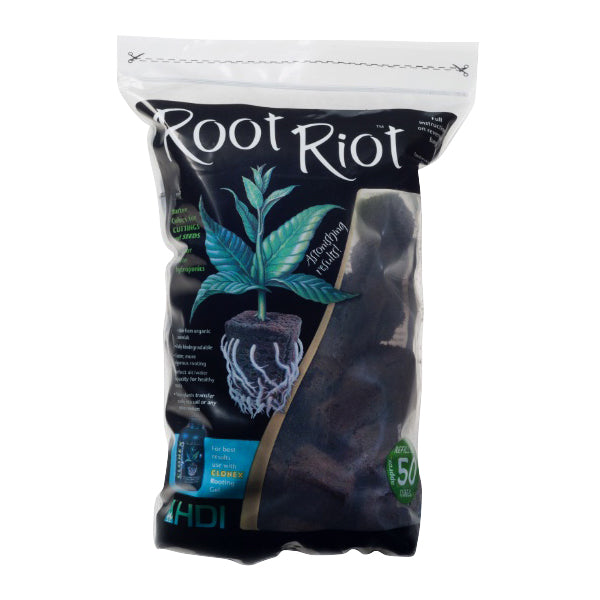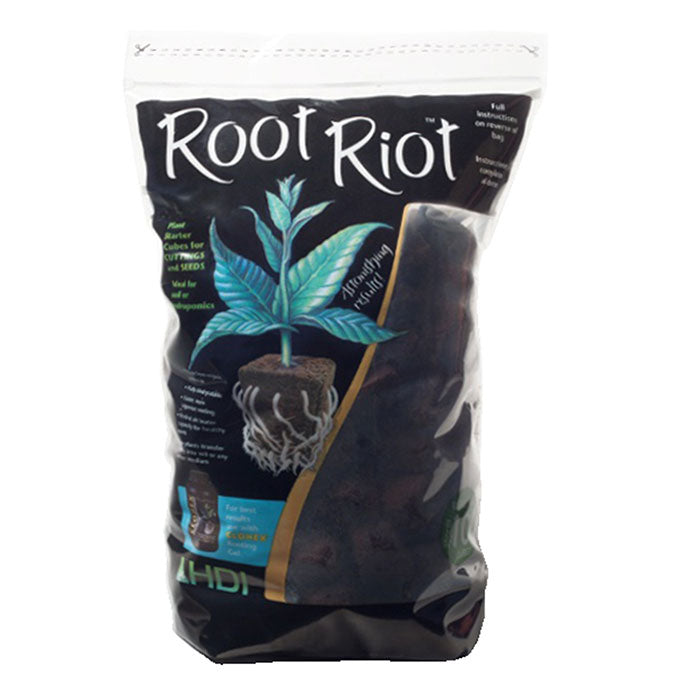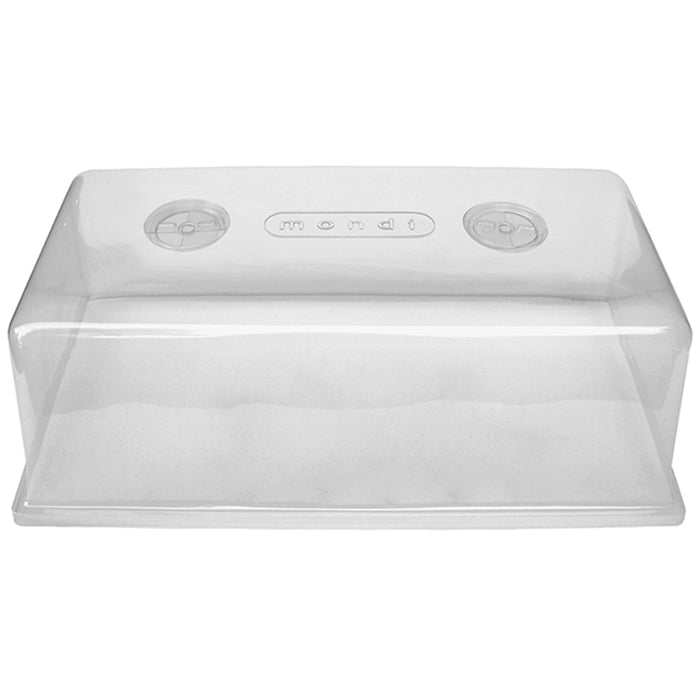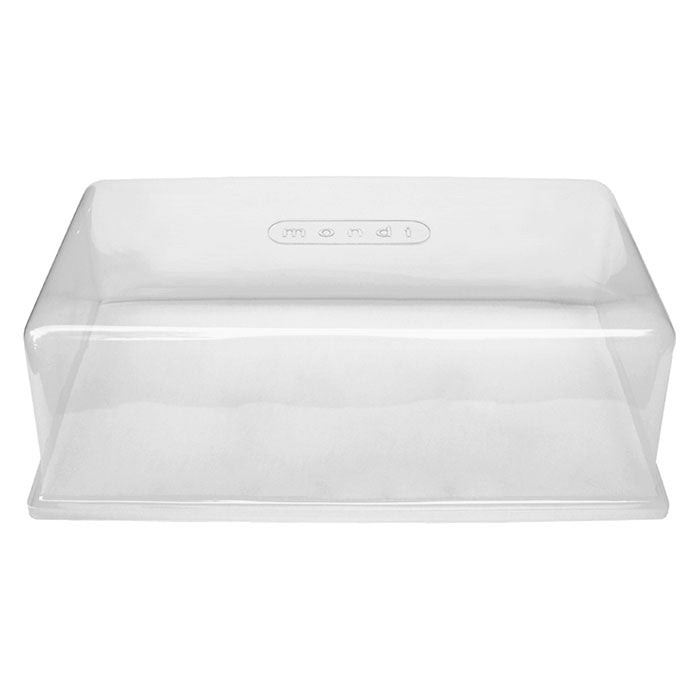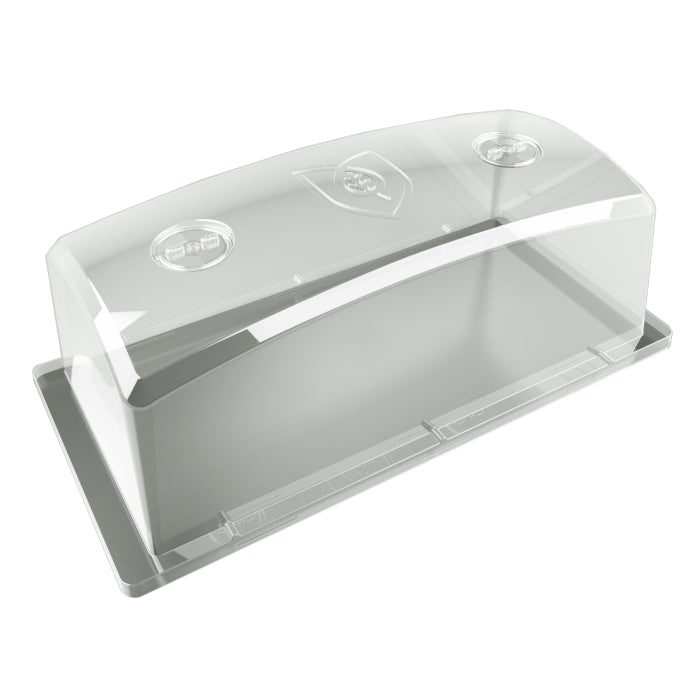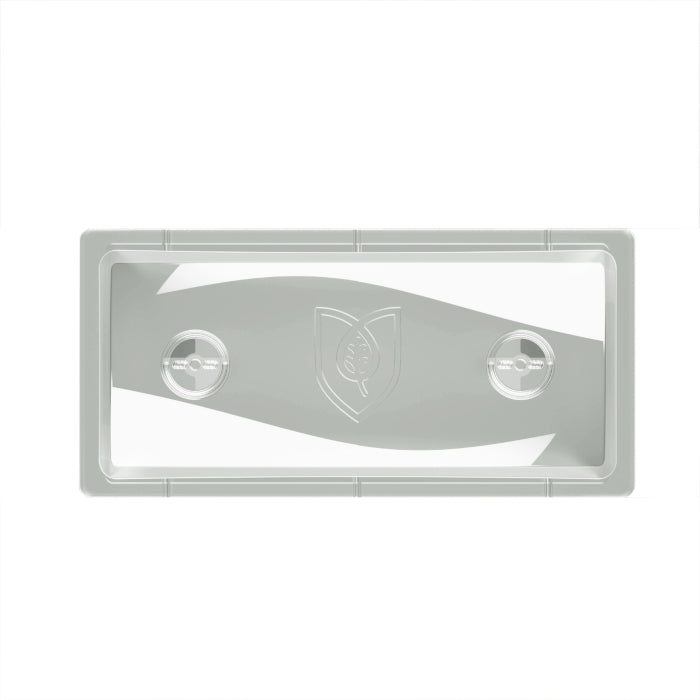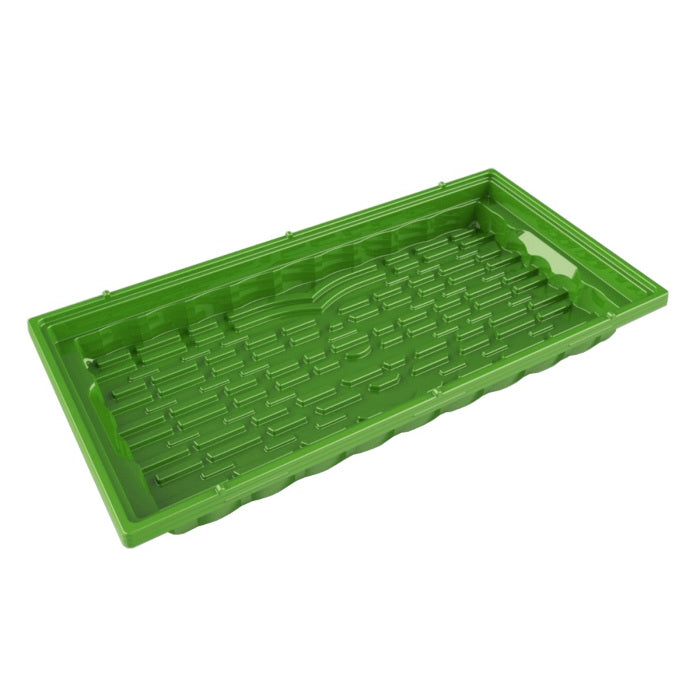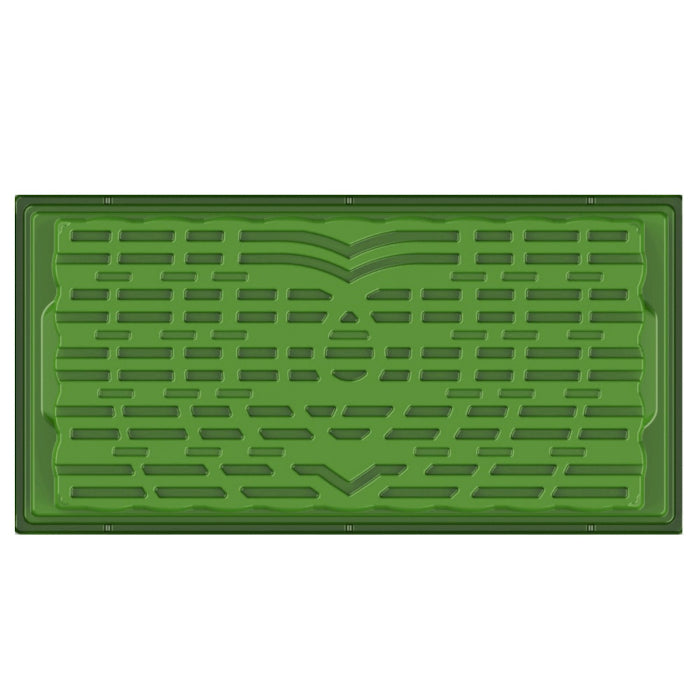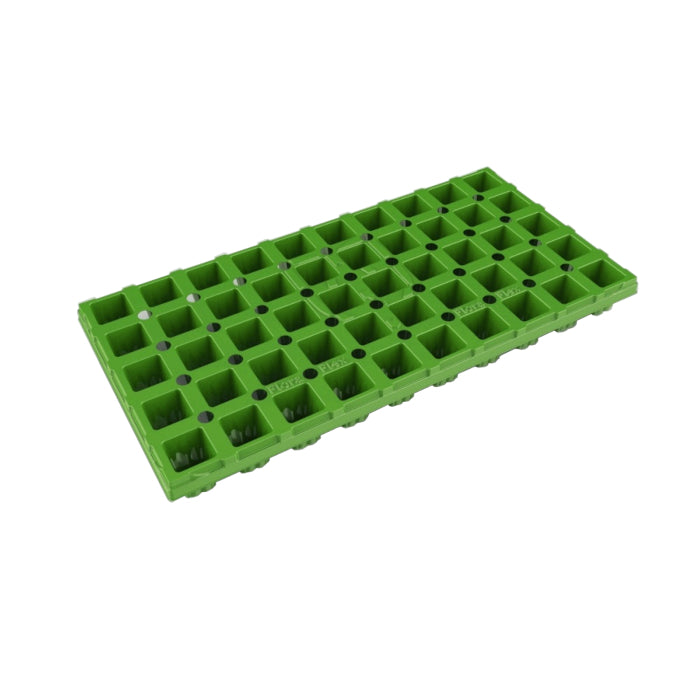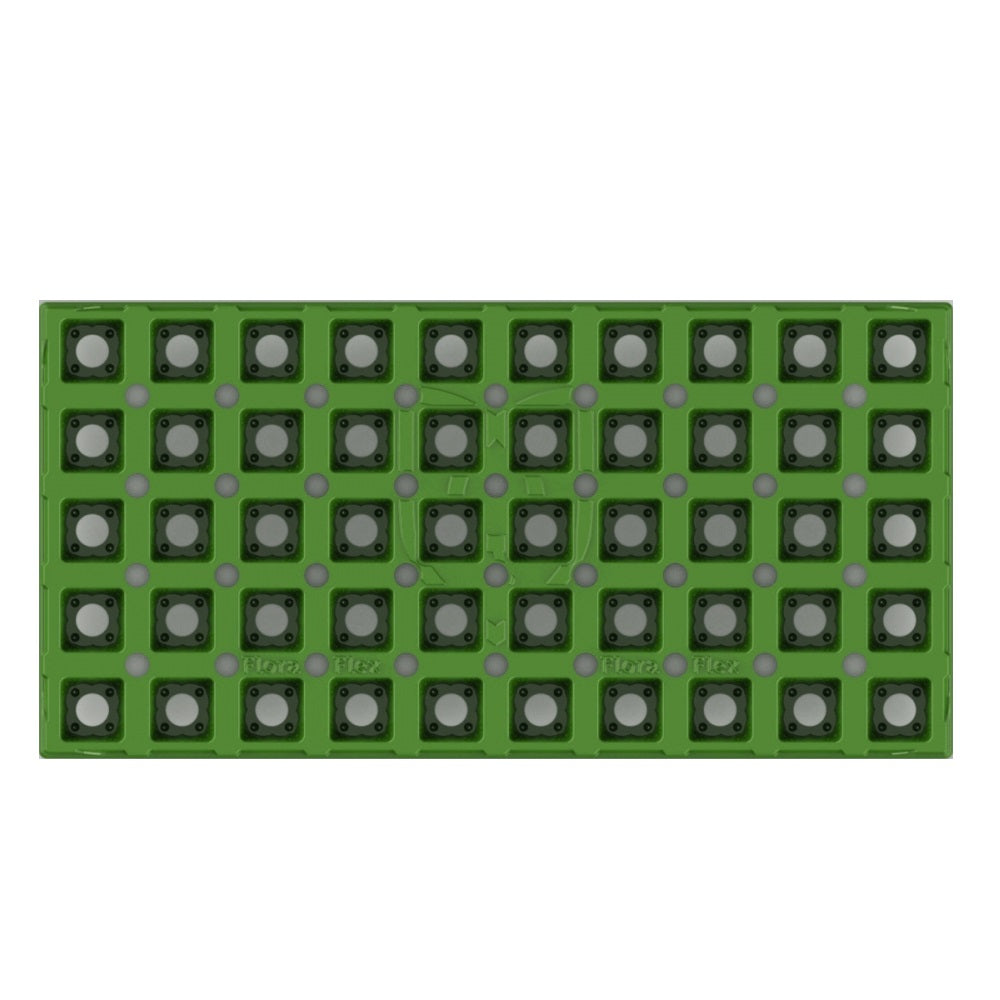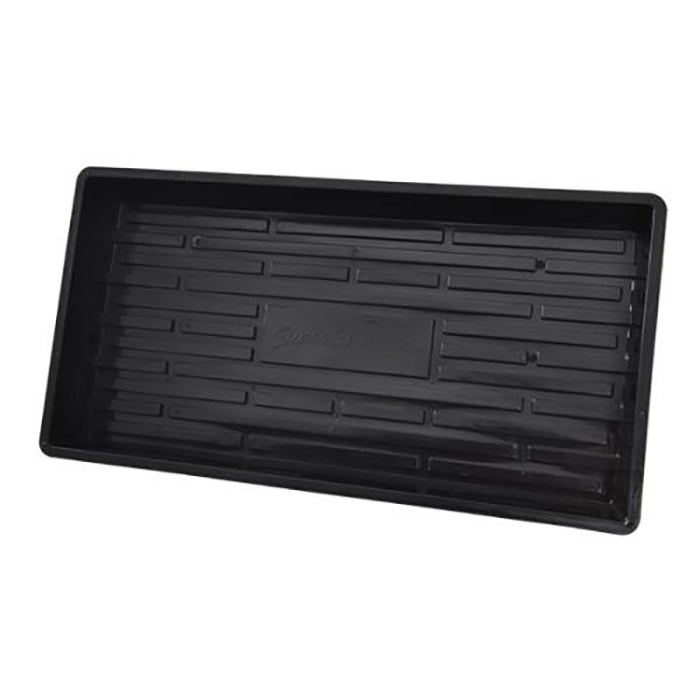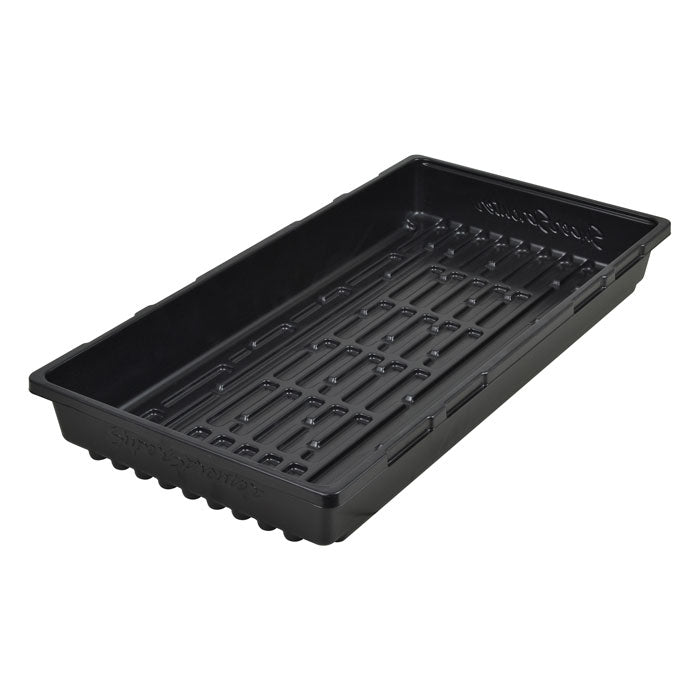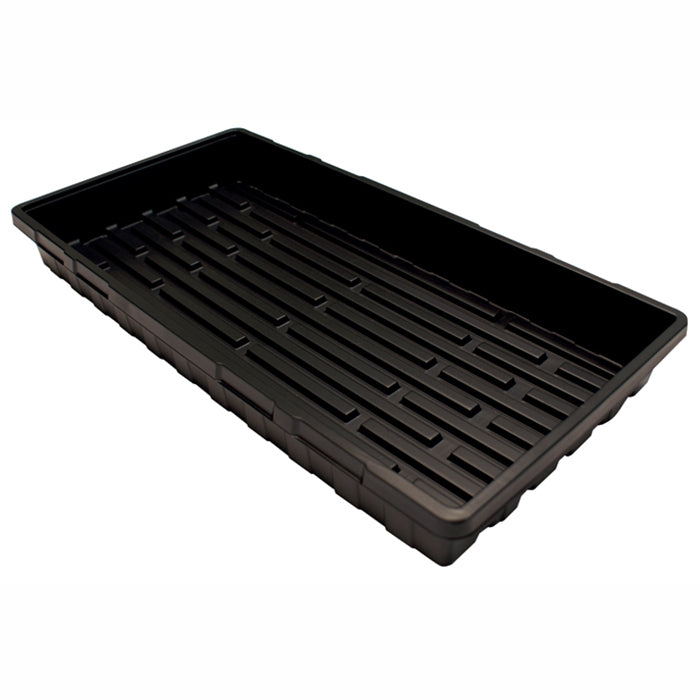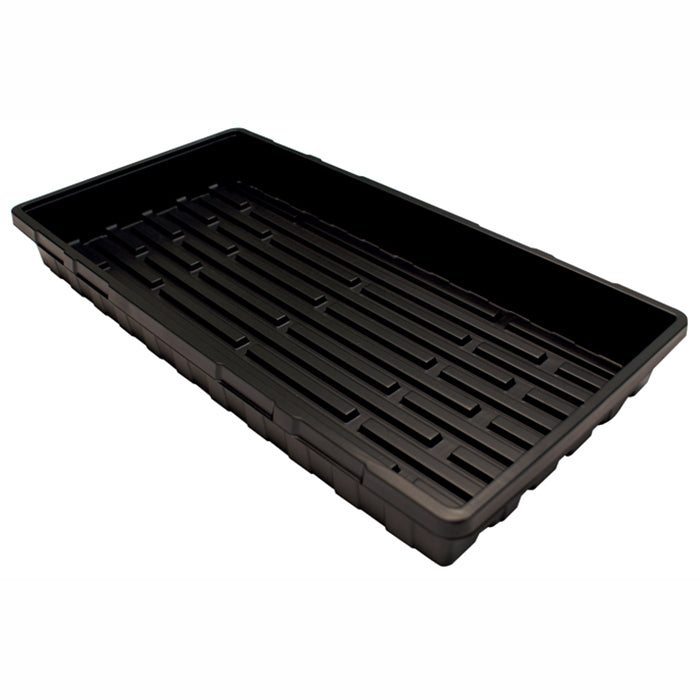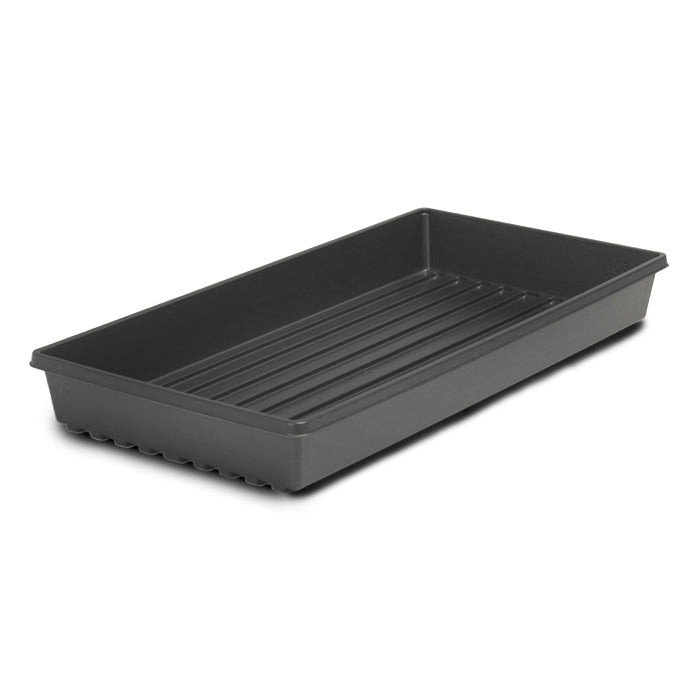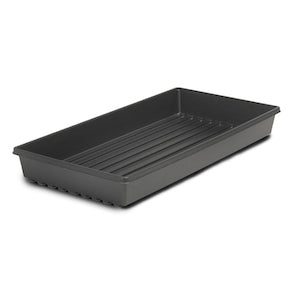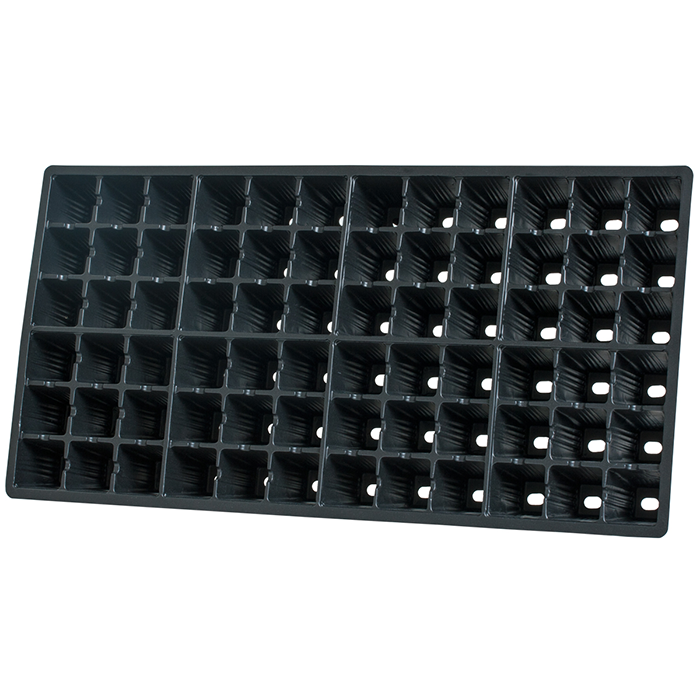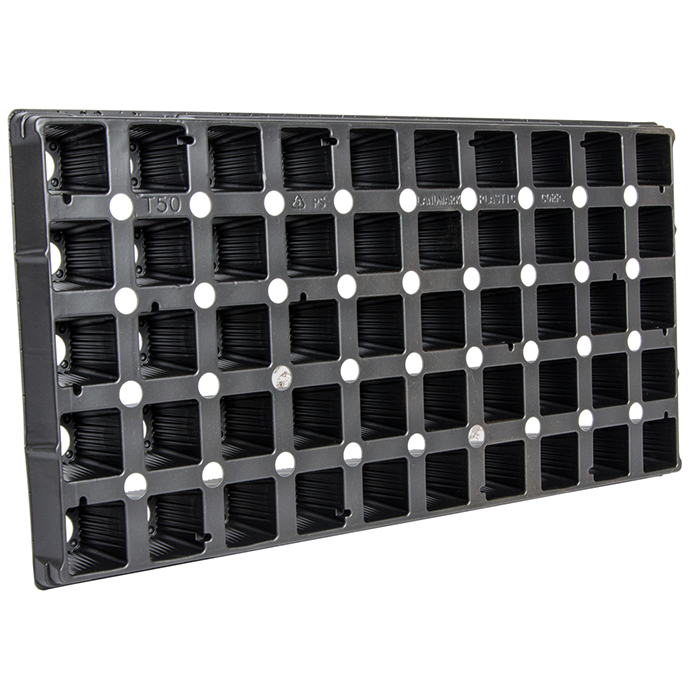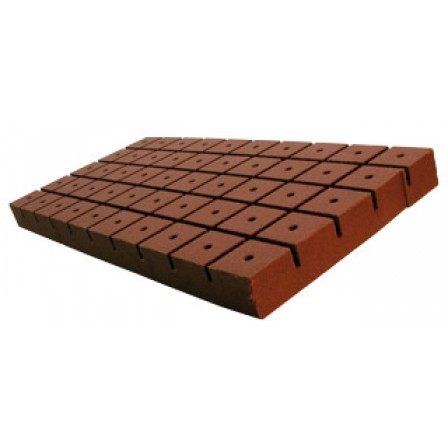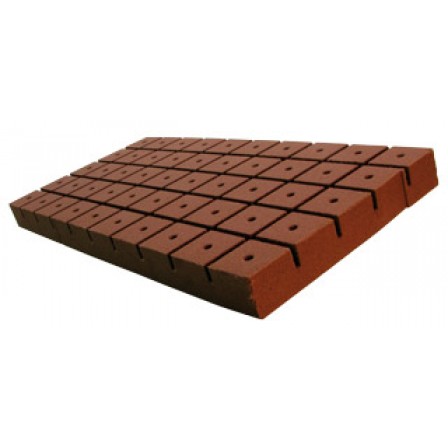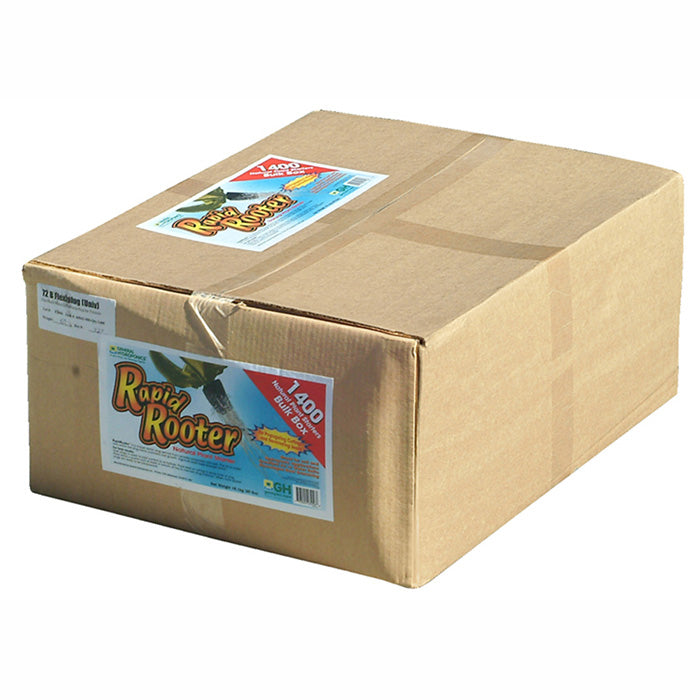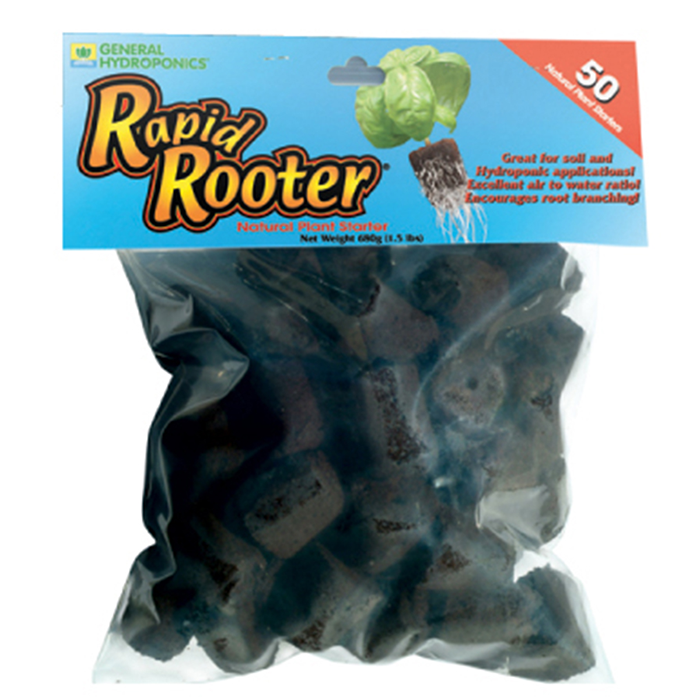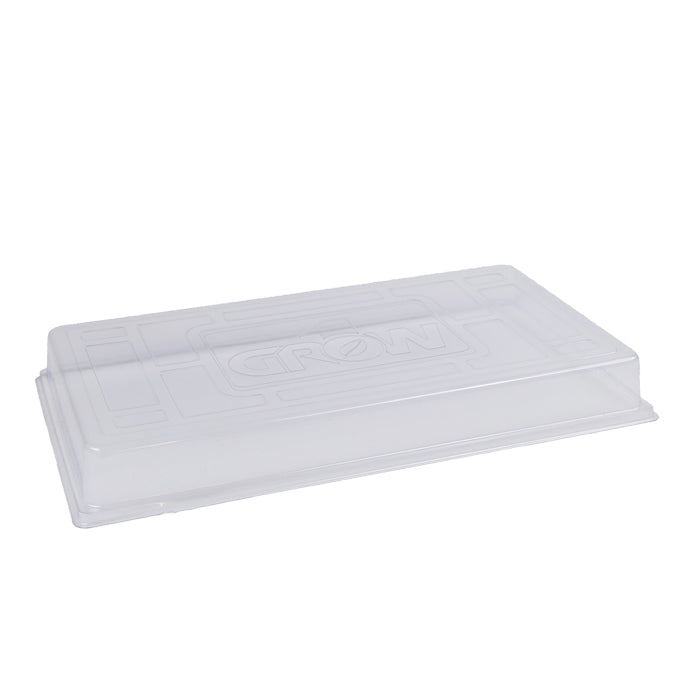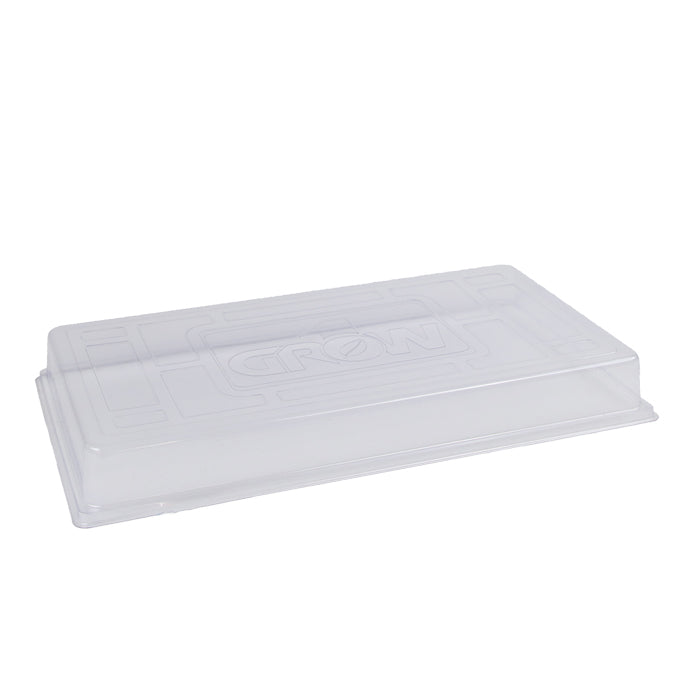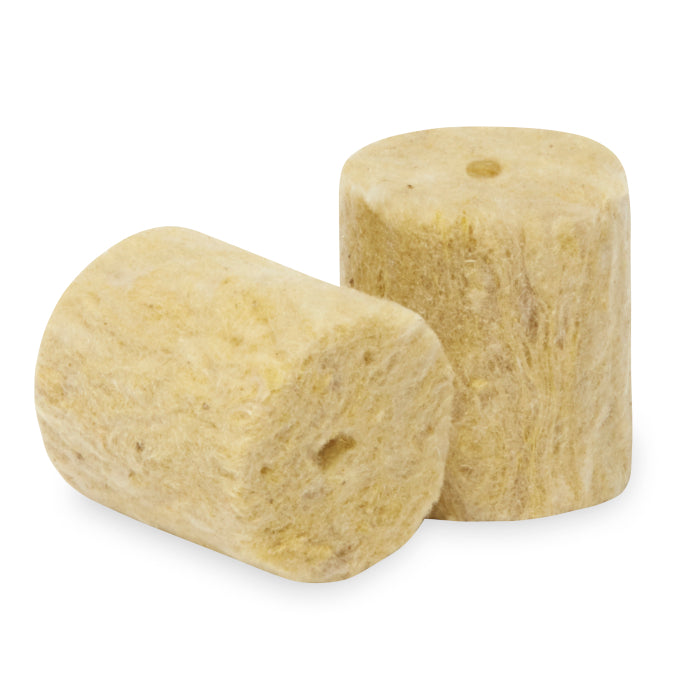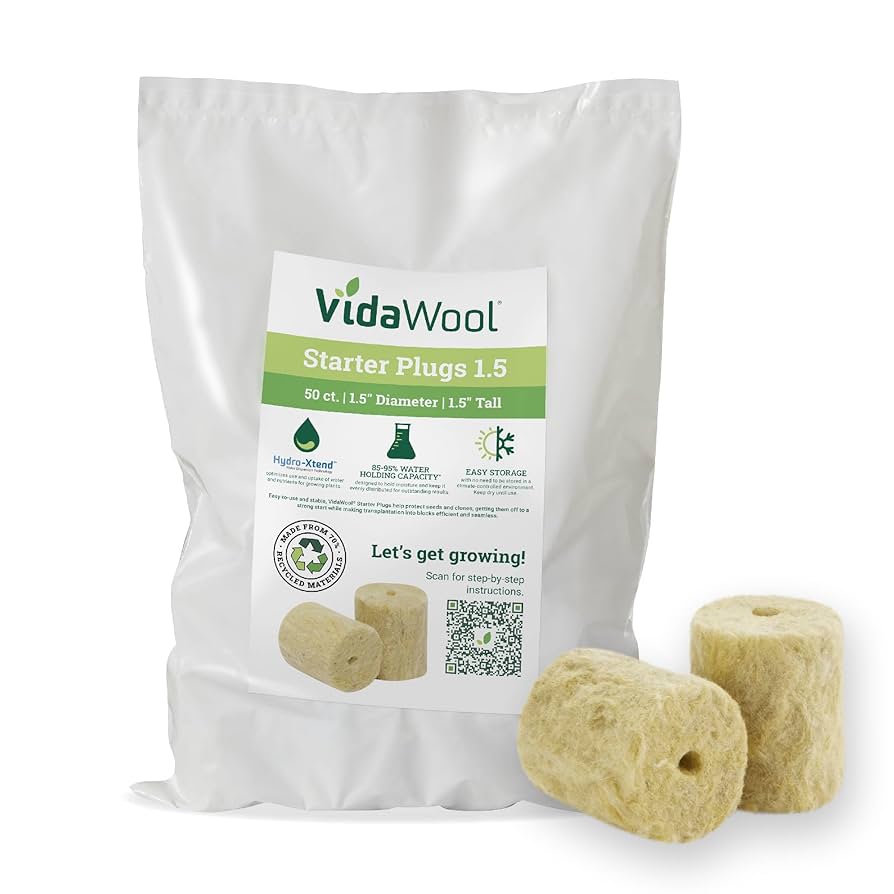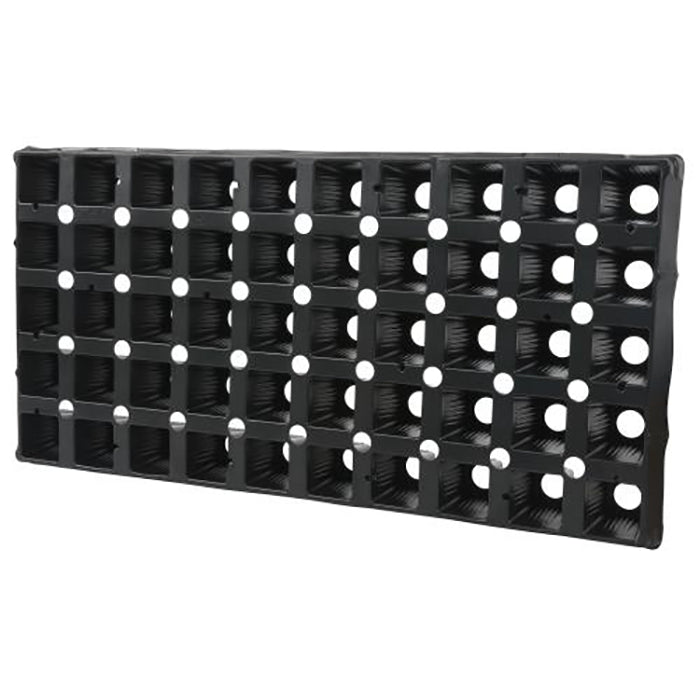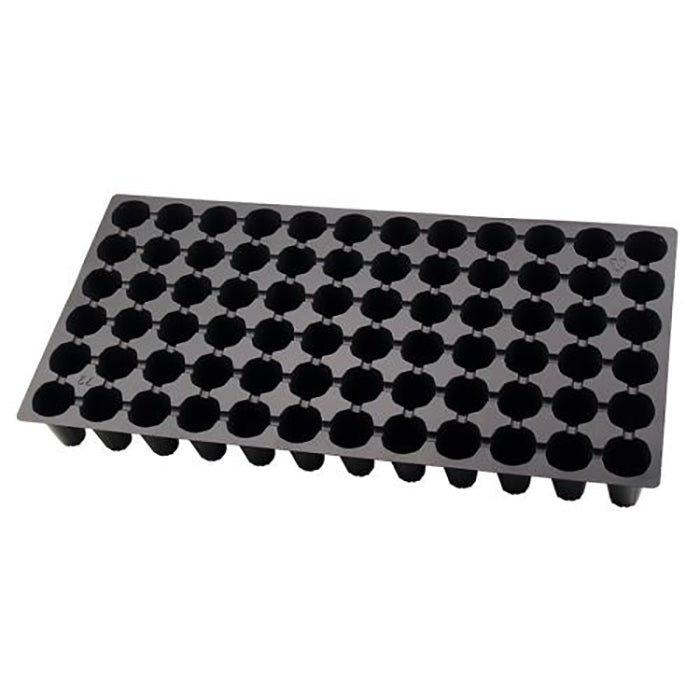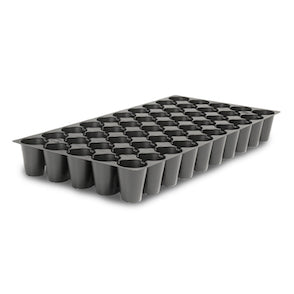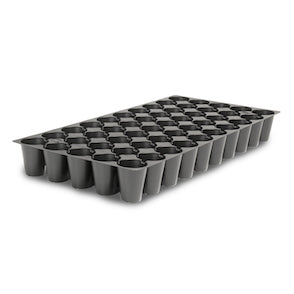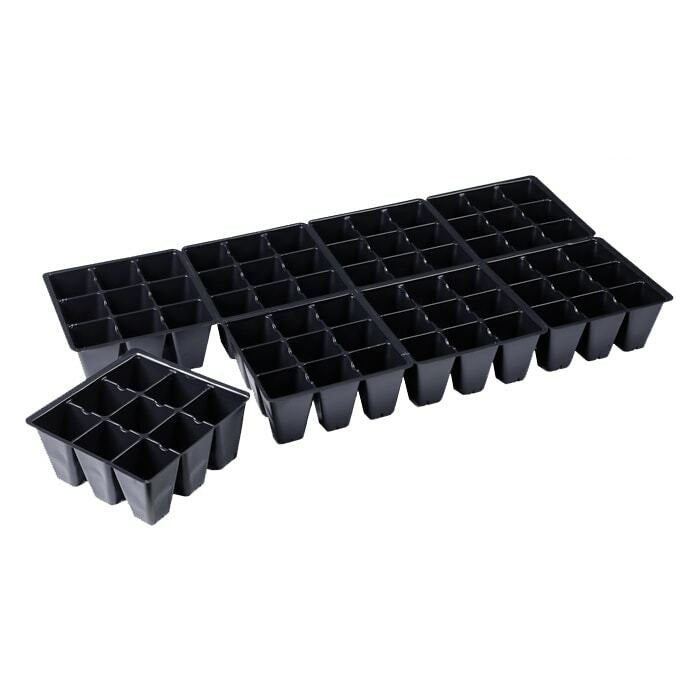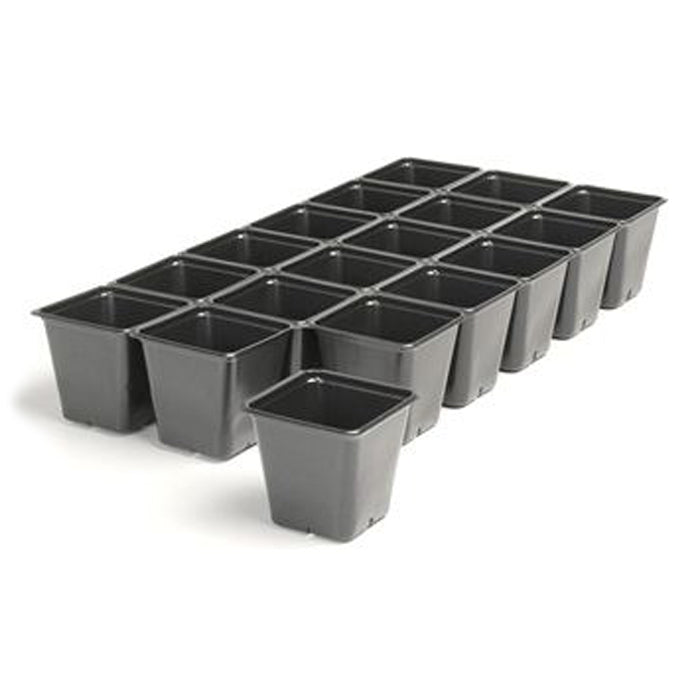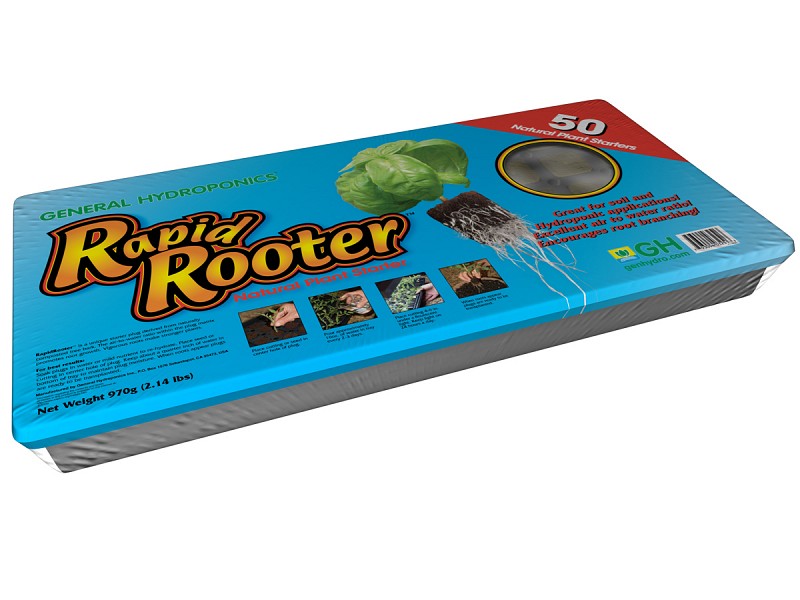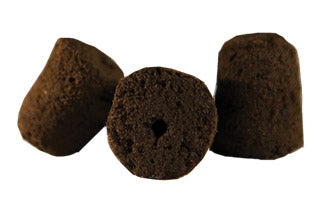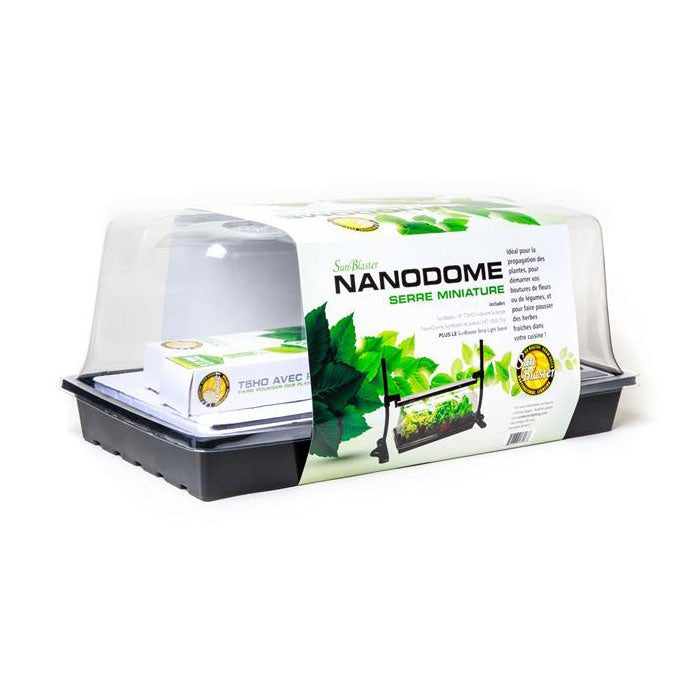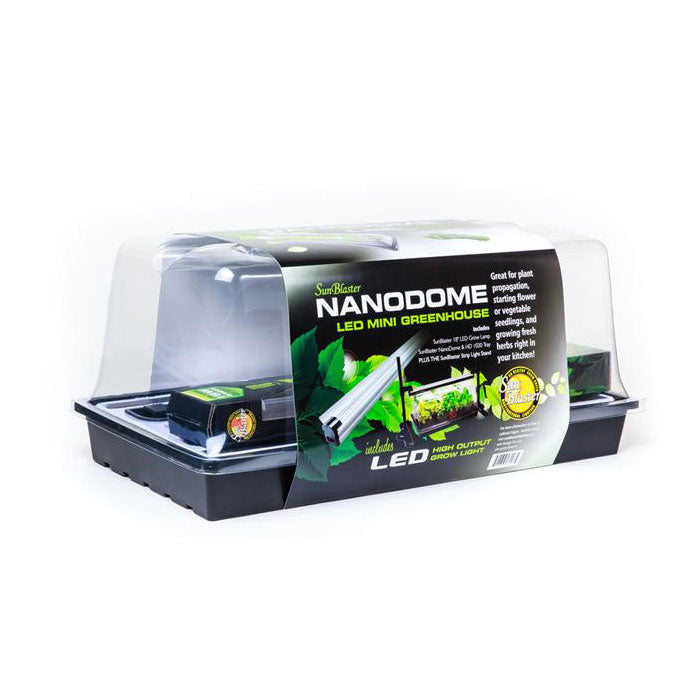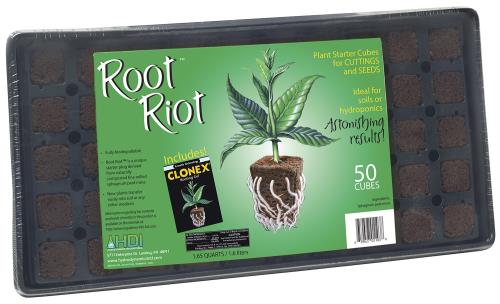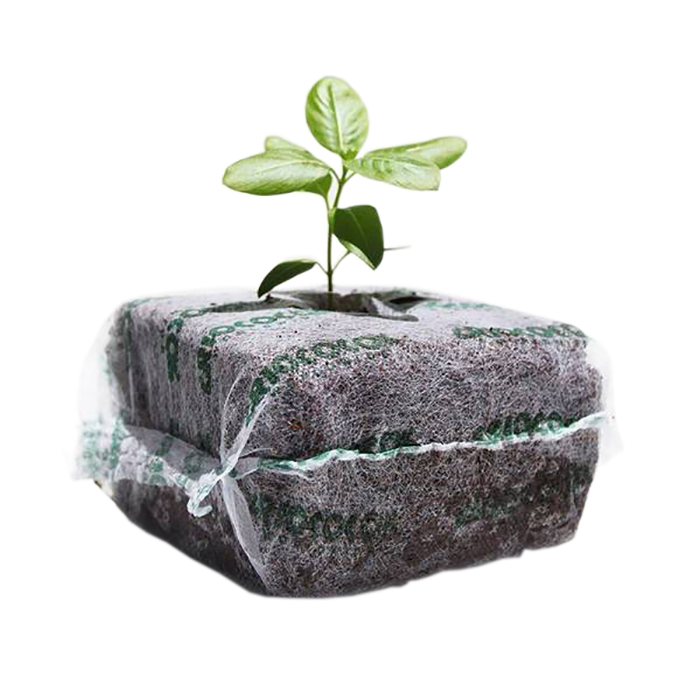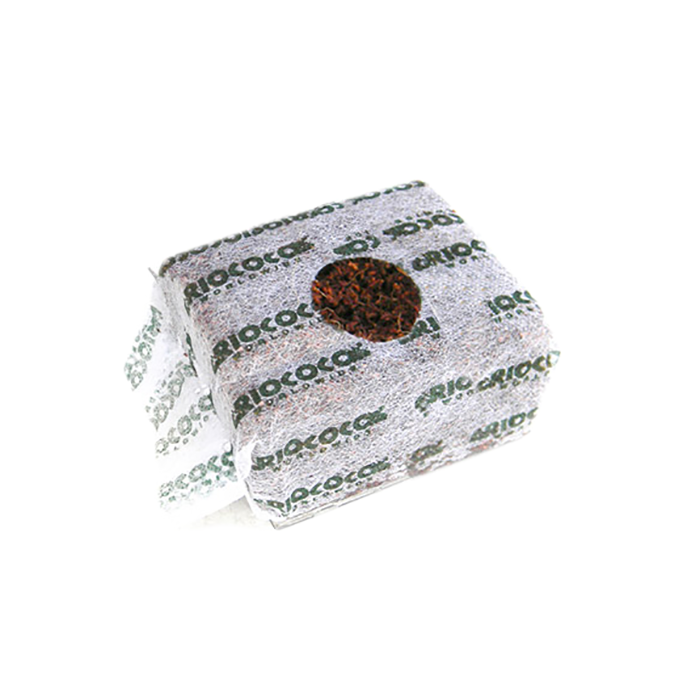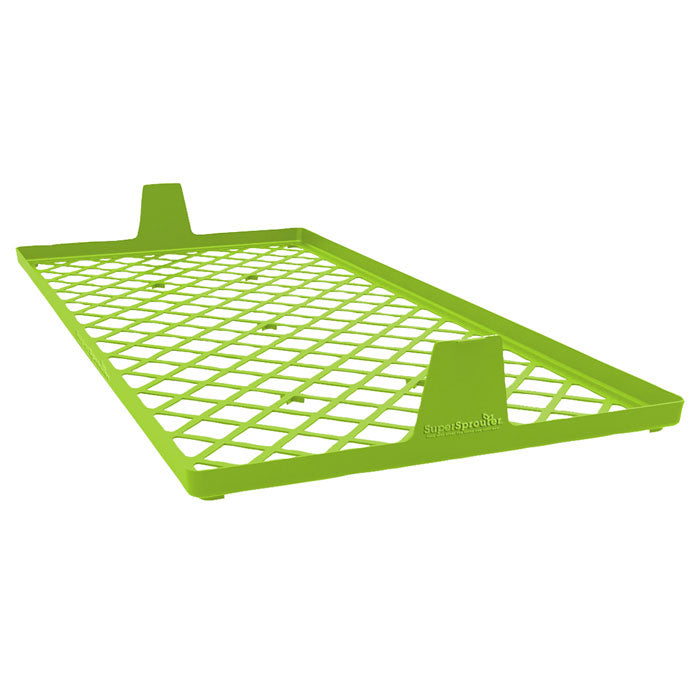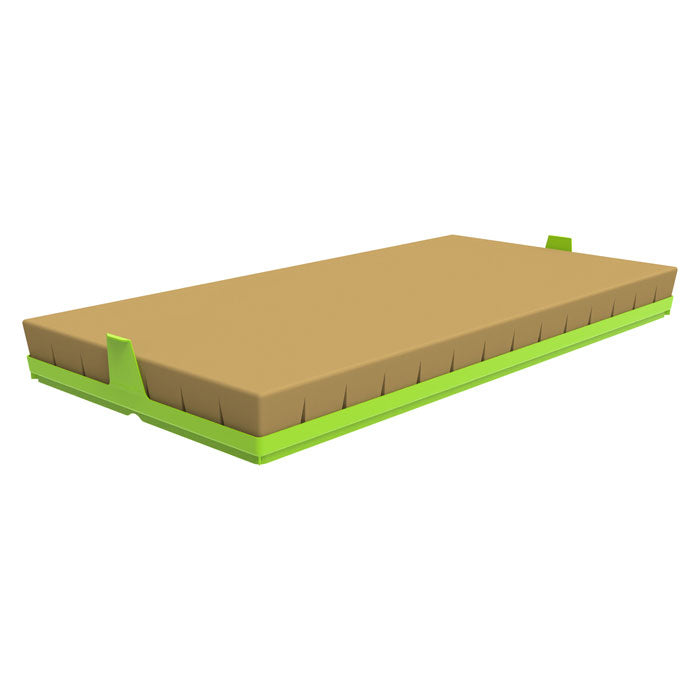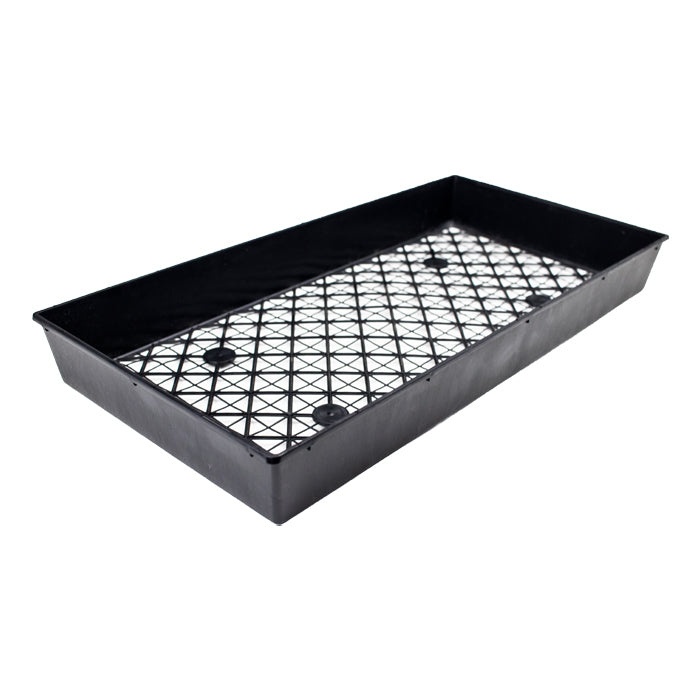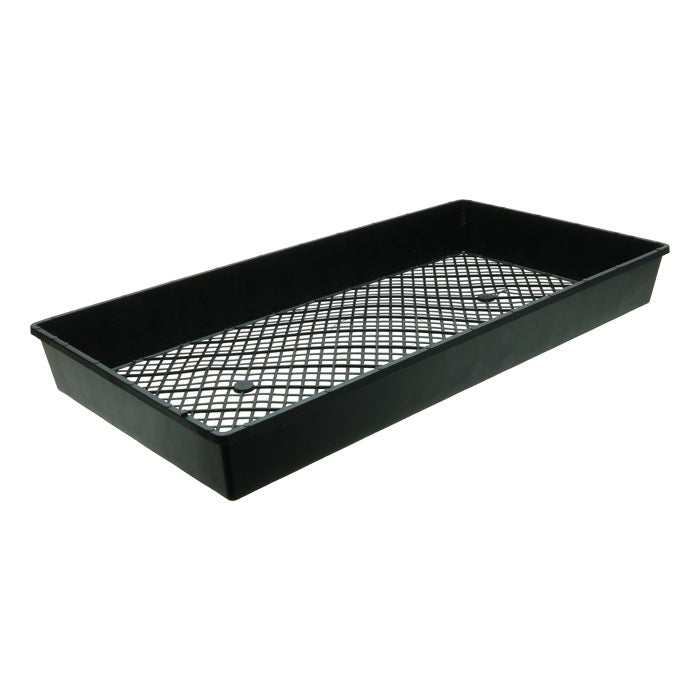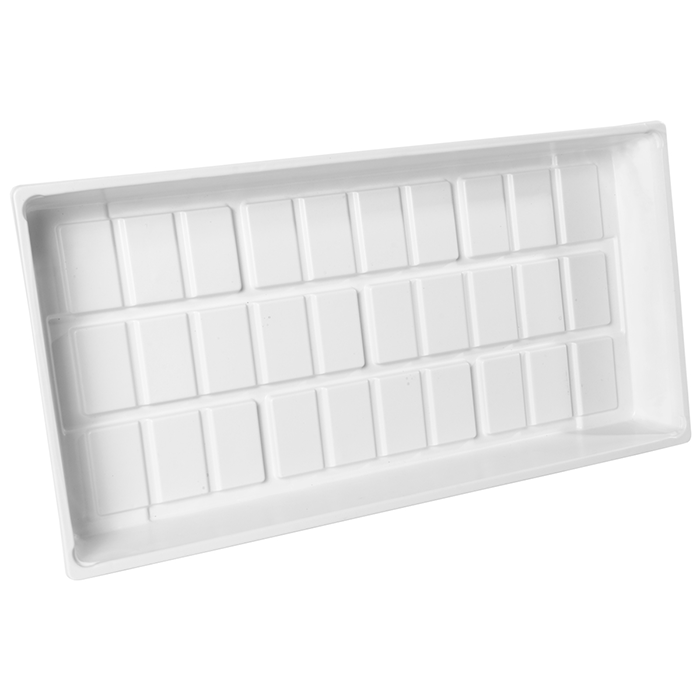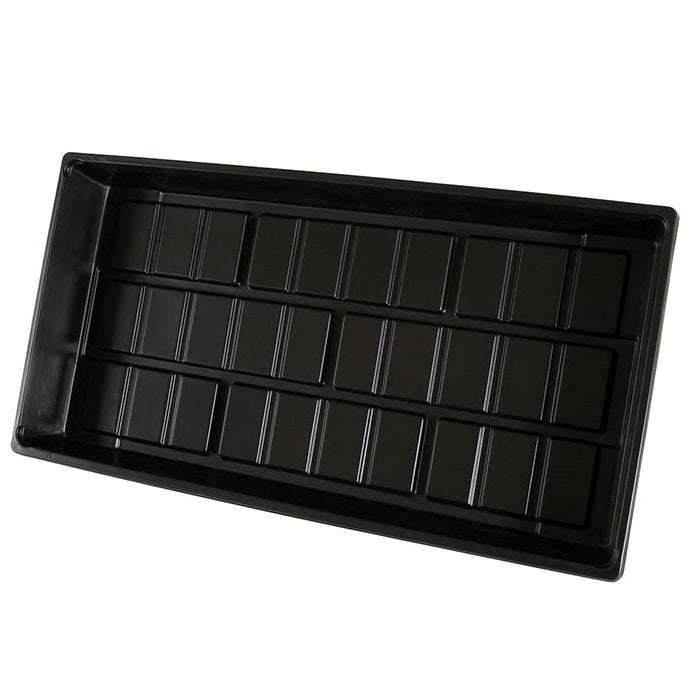Propagation trays, domes, and rooting plugs work together to create the perfect environment for clones or seedlings. As these new plants begin the early stages of life, they need ideal conditions to succeed, and at Hydrobuilder, we make this simple.
What is a seedling tray?
Seed starting trays are the foundation of your propagation system. These trays are designed to hold the seed or clone as well as the growing medium for the seed or clone. Using a tray simplifies transplanting when the time comes, especially if you use a rooting plug.
Propagation trays usually have holes in the bottom and do a great job of draining water and nutrients, ensuring the plant remains in a fresh solution. The individual drainage holes ensure every seedling or clone gets fed.
What is a humidity dome?
The second component of your clone or seedling system is the humidity dome. Also known as a propagation dome. This covers your seedling tray and helps give your clones a head start by maintaining proper temperature and moisture levels. Clones and seeds need humidity of 75%, and temperatures of 75-80 degrees Fahrenheit.
Most domes include vents, as you will slowly lower the humidity as the plant takes root. Most growers implement a heat mat to raise temperatures, and a hygrometer to ensure the humidity is where it needs to be. Some domes even have a groove in the top to hold a seedling grow light
When should I remove the humidity dome for clones?
For the first 5-7 days of growth, you can slowly open the vents on your dome. As you watch your plant grow, watch for wilting or signs of dehydration. If you see signs of dehydration, this is a sign that you should close the vents.
After seven to ten days is usually about when you should start to see roots. At this point, you can remove the dome completely, but remember to watch for stress signs.
What are seed plugs?
Rooting plugs, also known as seed starting plugs, are an easy way to plant your seeds into your propagation tray. These are sold in bulk, and provide great aeration while still retaining moisture and nutrients for the seedling or cutting. These starting plugs will not affect plant pH.
How do I start seeds in trays with a seed starter kit?
First, you will probably need to soak your seed starting plug to make sure the seedling or fresh cutting has access to moisture immediately. Then, simply place the seed into the plug, and place the plug into the tray insert.
It is important to maintain optimal moisture levels in the plug, as it can be difficult to re-hydrate them once they become dry. Once the roots begin to take, the plant can be transplanted to larger containers or into the ground without removing from the plug. Growers love using rooting plugs for their ease of use.
What are peat pots?
Unlike plastic pots, peat pots and fiber pots are biodegradable pots that make transplanting your seedlings and cuttings easier and helps prevent transplant shock. Peat pots, also referred to as jiffy pots, are eco-friendly and can be planted and degrade into organic nutrients that can be consumed by the growing plant.
If you are interested in learning more about propagation, check out our definitive guide on how to clone a plant in our learning center! If you are not sure which seed starting kits are for you, you can check out this year-end review in our blog. The best seed starter kits of the year is a great article and has many options for every type of grower.
If you are starting from seed and need to be pointed in the right direction, we have you covered! Check out our definitive guide on germinating seeds.
If you still have questions, our experienced growers can be reached at 888-815-9763!
